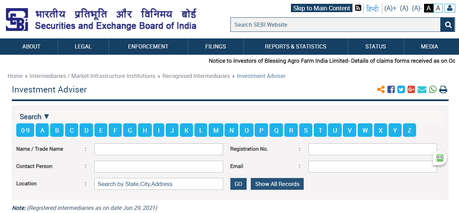Are you ready to embark on a journey towards financial growth and security?
Welcome to the gateway of financial growth and stability! If you've ever wondered about the best ways to make your money work for you in India, you're in the right place.
Investing your money is a crucial step, and in India's ever-evolving financial landscape, making informed decisions is paramount.
Join me as I unveil the tips that will empower you to make sound investment choices and build a brighter financial future in India.
If you are among those who have just started earning and want to start investing, this article will give you best investment options in India in 2023.
- 5 tips to get the right investing mindset
- 10 tips about best investment options in India
Without any further ado, let's start.
15 Best options where you can invest money in India
Setting up your investment goals is the first step to investing money. You must define your investment goals for investment, investment period, and the amount required.

For example, your investment goal can be for the higher study of your 3-year-old child. You would need, say, Rs 20 lakh after 15 years.
You can divide your investment goals into the long-term and short-term.
#1. Long-term goalsLong-term goals are those that you require more than 5 to accomplish, such as buying your house, a child's higher education, a child's marriage, or retirement savings.
For long-term goals, you can invest in stocks or equity mutual funds that give higher returns over a long period as compared to other investment options.
For example,If you bought 10 MRF tyres shares in June 2000 at Rs. 1,500 per share (total investment Rs 15000). You would have Rs. 8,00,000 (at the current share price in just 20 years.
Not every share performs like MRF tires, so you can expect an average return of around 13% to 18% over the long-term period.
#2. Short-term goalsGoals that you want to achieve in the short period of 1 to 2 years, like buying a car or a foreign trip.
You should invest in low-risk or safer investment instruments like fixed deposits, recurring deposits, or debt funds to avoid market fluctuations at the time of money requirement.
These investments are not linked with the stock market, so you don't have the risk of money loss except for debt funds, where you think of little risk.
You can expect low returns of around 5% to 7%, as these investments are not linked with the stock market or other high-risk, high-return investment instruments.
You must know your risk appetite before starting investing in any option. Some investments, like stocks or mutual funds, may give higher returns, but they are riskier than FD, PPF, and RD.
Risk appetite is your capacity to take risks to achieve your return objectives.
Suppose an investment option has the potential to give a 22% return but has the chance of losing your investment capital by 40% as well. If you are ready to take the risk of 40% of capital value to earn a 22% return, then your risk appetite is high.
For example, suppose you invested Rs. 1 lakh in "Yes Bank" stocks in 2018 at Rs. 350 per share (total 286 shares), and Yes Bank's stock price collapsed in 2019 and reached Rs. 35.
That means your 1 lakh principal amount dropped to Rs. 10,000 only after 1 year. That's how you can get an extreme loss if you invest without knowing the fundamentals of a stock.
Wrong time investment example: Suppose you invested Rs. 52,000 in the HDFC capital builder mutual fund in Feb 2020 at Rs. 26 per unit.
The stock market crashed in March 2020, and that wiped Rs. 20,000 from your invested principal amount and you are left with Rs. 32,000 in your mutual fund portfolio.
There is no doubt that it started recovering again within a few months.
But if you couldn't handle the stress of that loss, you would have redeemed your mutual fund units and bore Rs. 20,000 loss, But if you can bear the loss, the mutual fund is currently around Rs. 30, giving you a profit of Rs. 8,000 on your investment.
So always invest, keeping your risk tolerance level in mind.
"Don't put all your eggs in one basket."If you have started investing already, make sure that you diversify your portfolio. Diversifying means balancing your investment money in risk-oriented and low-risk assets to reduce the impact of market volatility.
High-risk-oriented investments like equity mutual funds and direct stock investments will help you earn higher returns, whereas low-risk investments like debt funds, gold, or PPF will help you protect your investment from declining if the stock market turns negative.
You should also diversify your stock investment by investing in different sectors like Banking, FMCG, IT, Pharmaceutical because all sectors won't fall together.
If IT stock prices are falling, your pharmaceutical stocks may rise and cover the loss.
"Risk comes from not knowing what you're doing." - Warren BuffettYou can plan your investments yourself if you have knowledge and time. Otherwise, you can hire a certified financial planner (CFP) who will do the job.
We usually ignore the importance of hiring a professional for the sake of saving a few bucks but don't realize the long-term loss that you have to bear because you may not save your money in the right asset, at the right time, and in the right proportion.
The CFP will understand your financial goals, your current income, liabilities, and the amount you can invest. Then he would suggest you invest in a financial asset and explain why that would be beneficial for you.
Beware of self-proclaimed planners that offer you magic returns and overnight get rich products or random advice from friends that could be loss-making.
Rather go with SEBI registered financial planners for research-based advice.

"An investment in knowledge pays the best interest." - Benjamin Franklin
Invest in yourself to learn more about personal finance.
You can read personal finance books like The Intelligent Investor to gain an understanding of different financial concepts, like how to invest in the stock market or mutual funds, the benefits of emergency funds, or how to pay off debt quickly.
You can also watch YouTube channels like 'CA Rachna Ranade' or personal finance blogs like 'Investing Expert' for further knowledge.
A systematic Investment Plan enables you to build an investment habit if you are new to investing.
You can invest a fixed amount in mutual funds through SIP on regular intervals like monthly, weekly, or quarterly. You can start as low as Rs. 500.

SIP helps you grow money over longer timeframes and also reduces the risk of market fluctuations.
For example, if you invest Rs. 1000 per month in SIP, at Rs. 100 per unit, you buy 10 units in the first month.
Next month, if the market crashes and the fund price falls to Rs. 50, your investment amount will be reduced to Rs. 500 only. But if you have invested a lump sum of Rs. 10,000, your investment amount would have declined to Rs. 5,000.
Secondly, now you would buy 20 units (2x units) through the next SIP, which would gain you more profits when the market rises.
SIP investment provides you the triple benefit of forming an investment habit, protects against market volatility, and increases your buying capacity during market dips.
10 Investment Options to Invest Money in India 2023
If you are a beginner investor who wants to invest in stocks but is not interested in knowing the complexity of stock selection, can opt for Index Funds.
Index funds are a type of mutual fund that tracks the market index. In India, we have two Market Indices - Sensex for BSE (Bombay Stock Exchange) and Nifty for NSE (National Stock Exchange).
An index fund invests in all the stocks that an index contains. For example, if you invest in a Nifty-based index fund, it will invest in all the 50 stocks that comprise the Nifty.

The major benefit of the Index fund is that since the market index grows in the long run, the funds that follow the market index, also grow similarly.
Secondly, index funds don't require active management from fund managers because they just imitate the index, so need not pay a high cost to a fund house for funds management.
An index fund doesn't beat the market like equity funds because of no active fund management. However, it gives you a steady return in a long time frame, provided there's no market crash.
For example, check out the Franklin Index Fund performance in the snapshot below -
Source: Franklin India NSE Nifty (indiatimes.com)
The fund tracks Sensex and has given almost 18% return in the last 5 years, but couldn't beat the market index, as Sensex has grown at 18.69% in the same period.
Expected return - 12% to 18% annually (depending on the market index performance)
Stock investment is very lucrative because of its high return potential. But remember, stocks contain high risks.
You can invest in stocks if you understand company fundamentals, financial ratios, cash flow, and management.
You can start investing small amounts and keep on learning about stock analysis and increase the investment as you get a better understanding.
You can invest exponential gains if you invest in the right stock at the right time. For example, if you had invested Rs. 1,00,000 in Avanti Feeds in 2010 when the stock price was Rs. 2 per share.
Now, you would have a net worth of Rs. 5.45 crores.
On the other hand, if you have invested in the wrong share or at the wrong time, you may lose all the invested amount.
As I have already given the example of Yes Bank's share price fall. If you invested Rs. 1 lakh in "Yes Bank" stocks in 2018 at a price of Rs. 350 per share, your 1 lakh principal amount dropped to Rs. 10,000 only after 1 year, eroding 90% of the invested amount.
The best way to invest in stocks is to start with small amounts and learn about stock investment fundamentals.
Expected returns - Around 14% to 18% annually.
The current interest rate of VPF for the year 2021-22 is 8.5%, which is the highest interest rate as compared to any other government investment schemes like PPF, or Sukanya Samriddhi Yojana.
The voluntary Provident Fund is an extension of EPF (Employees Provident Fund) for employees who participate in EPF but want to contribute a bigger amount.
You can contribute only up to 12% in EPF, but the VPF option allows you to contribute up to 100% with the same benefit of EPF.
Suppose you are single with a monthly salary of Rs. 30,000, and you can contribute in EPF up to Rs. 3,600. But if you want to invest more, say 50% of your salary, you can opt for VPF and earn the same interest in a contribution of Rs. 15,000 per month.
Since your EPF and VPF accounts are attached to your UID card, it doesn't get affected when you switch jobs.
Note - VPF has a lock-in period of 5 years. You can withdraw VPF or change the contribution amount on completion of 5 years only.
Return - 8.5% per annum.
ELSS or Equity-linked savings scheme funds are mutual funds that allow you to get a tax rebate. ELSS funds are eligible for tax deductions of up to Rs. 1.50 lakh under section 80(C).
You can save up to Rs. 46,800 by investing in ELSS Funds.
- Tax savings = Tax rate depending on slab * Maximum deduction amount
- Final tax savings including 4% cess = (Tax savings * 4% ) + Tax savings
ELSS funds come with a lock-in period of 3 years, which is the shortest among other tax-saving investments like PPF has 15 years lock-in period.
The tax-saving formula is as follows -ELSS funds not only save taxes but offer decent returns as around 65% of funds are allocated in equity. That makes them a risk-oriented investment as well.
Expected return - 12% to 16% per year.
If you are not an employee but still want to invest in the provident fund, then PPF is the ideal option for you.
You can earn 7.1% annual interest on your invested amount as per the latest government guidelines.
PPF has a lock-in period of 15 years. You can only withdraw prematurely only after the completion of the 5th year from inception.
Premature withdrawal is approved only under special conditions like treatment of a life-threatening disease or higher education.
Another benefit of PPF is you get a tax rebate on your contribution up to Rs. 1.50 lakh u/s 80C of IT Act India. The interest earned on PPF is also tax-free and gives you dual tax benefits.
Return - 7.1% annually
Money market funds are short-term debt funds that invest in secure investment instruments that give you fixed returns with lesser risk tolerance.
Secure investment assets could be government securities like Treasury bills. Money market funds give you an annual return between 6% and 7%, depending on the investment period.
Money market funds are an ideal short-term investment for a period of 2 to 3 years.
Source: HDFC Money Market Fund (valueresearchonline.com)
In the above example, the HDFC money market fund gives an annual return of 7.08% for a 3-year time period, which is better than a fixed deposit as FD interest rates are quite low now, around 5% to 6% per annum.
Expected return - 7% to 9% per annum.
You can invest in bitcoins or cryptocurrencies if you have any knowledge about cryptocurrency or are willing to learn about the market.
As the crypto market is highly volatile, I suggest you invest only if you understand. Otherwise, there is a possibility that you will end up losing your money.
You can invest in bitcoins or other profitable cryptocurrencies like Ethereum, UniSwap, or Litecoin.
Bitcoin has given an average 408% return in the last 4 years.
But remember it also gave -72.6% returns in 2018 which means if you have invested 10,000 in 2018, then you would have left with Rs. 2,740.
Go for cryptocurrencies if you want to keep invested for the long term of 5 to 7 years with an understanding of risk factors.
Expected return - Above 30% per year if well-diversified to reduce the risk
You can invest in Sukanya Samriddhi Yojana for your girl child's higher education and marriage.
SSY is a government scheme that gives you a 7.6% interest rate which is the second highest among all the government schemes after VPF.
Your investment maturity term is 21 years. You can withdraw money either on maturity or 50% of the amount when your girl completes 18 years of her higher education.
The conditions to comply with the Sukanya Samriddhi Yojana are as follows -
- The girl child must be an Indian resident
- The maximum age to apply is 10 years
- Apply for up to 2 girl children in a family
- Birth certificate of the girl child
You can open an account with a minimum amount of Rs. 250. You have to invest for the first 14 years after that you have the option to stop supporting, but the interest will be accumulated on the previously invested amount.
Another benefit of SSY is tax exemption up to Rs. 1.50 lakh u/s 80(C).
Return - 7.6% per year (second highest after VPF among government schemes)
NPS is a retirement plan that allows you to invest in the long term. The lock-in period of NPS is retirement or when you reach 60 years of age.
Annual returns on NPS are around 8% to 10%. You get better returns than other government schemes in NPS because 50% of your money is invested in equities, which makes it a little riskier investment as compared to government schemes.
You get a 60% lump sum amount on maturity, and the rest of the 40% amount serves you as a monthly pension for the lifetime.
You can also contribute 50,000 extra despite your current investment status, which helps you save taxes up to Rs. 2 lakh (1.50 lakh + 50K) in NPS.
Partial withdrawal up to 25% is allowed only after 3 years of account opening. But only under specific circumstances like a kid's education, serious illness, or buying a home.
Expected return - 8% to 10% annually.
A Sweep-in account allows you to cultivate the benefits of a savings account with earnings of the fixed deposit.
In a sweep account, when your savings account balance exceeds a particular limit, the excess amount converts into a fixed deposit automatically & you start earning fixed deposit interest rates.
Whenever your savings account balance falls short of completing any transaction, your fixed deposit breaks down automatically, and money gets transferred to the savings account.

For example, in SBI, after approval of a Sweep-in account, when your savings amount increases above Rs. 25,000, your savings account is converted into FD.
Whenever you withdraw your money below Rs. 25,000, the account automatically converts into a savings account.
Most people like to keep money in savings accounts to meet the uncertainty. The sweep account provides you the liquidity of the savings account and the return of the fixed deposit.
Return - 4% to 6% per year.
FAQs on Investment Options in India
Final Thoughts: Tips to Start Investing Your Money in India
The central aspect of an investment is choosing the right instrument that aligns with your investment goals.
The main mantra of investment is - " Save first, then spend."
You may also Read:By following these guidelines, you can make intelligent decisions with your money and work toward achieving your financial goals.
Whether you're saving for the short term or planning for the long term, these tips will help you navigate the world of Indian investments and build a brighter financial future.
Jitendra Vaswani is a Digital Marketing Practitioner and renowned international keynote speaker who has embraced the digital nomad lifestyle as he travels around the world. He founded two successful websites, BloggersIdeas.com & Digital Marketing Agency DigiExe of which his success stories have expanded to authoring "Inside A Hustler's Brain : In Pursuit of Financial Freedom" (20,000 copies sold worldwide) and contributing to "International Best Selling Author of Growth Hacking Book 2". Jitendra designed workshops for over 10000+ professionals in Digital marketing across continents; with intentions ultimately anchored towards creating an impactable difference by helping people build their dream business online. Jitendra Vaswani is a high-powered investor with an impressive portfolio that includes Imagestation. To learn more about his investments, Find him on Linkedin, Twitter, & Facebook.
It's time to take action and start your investment journey in India!
